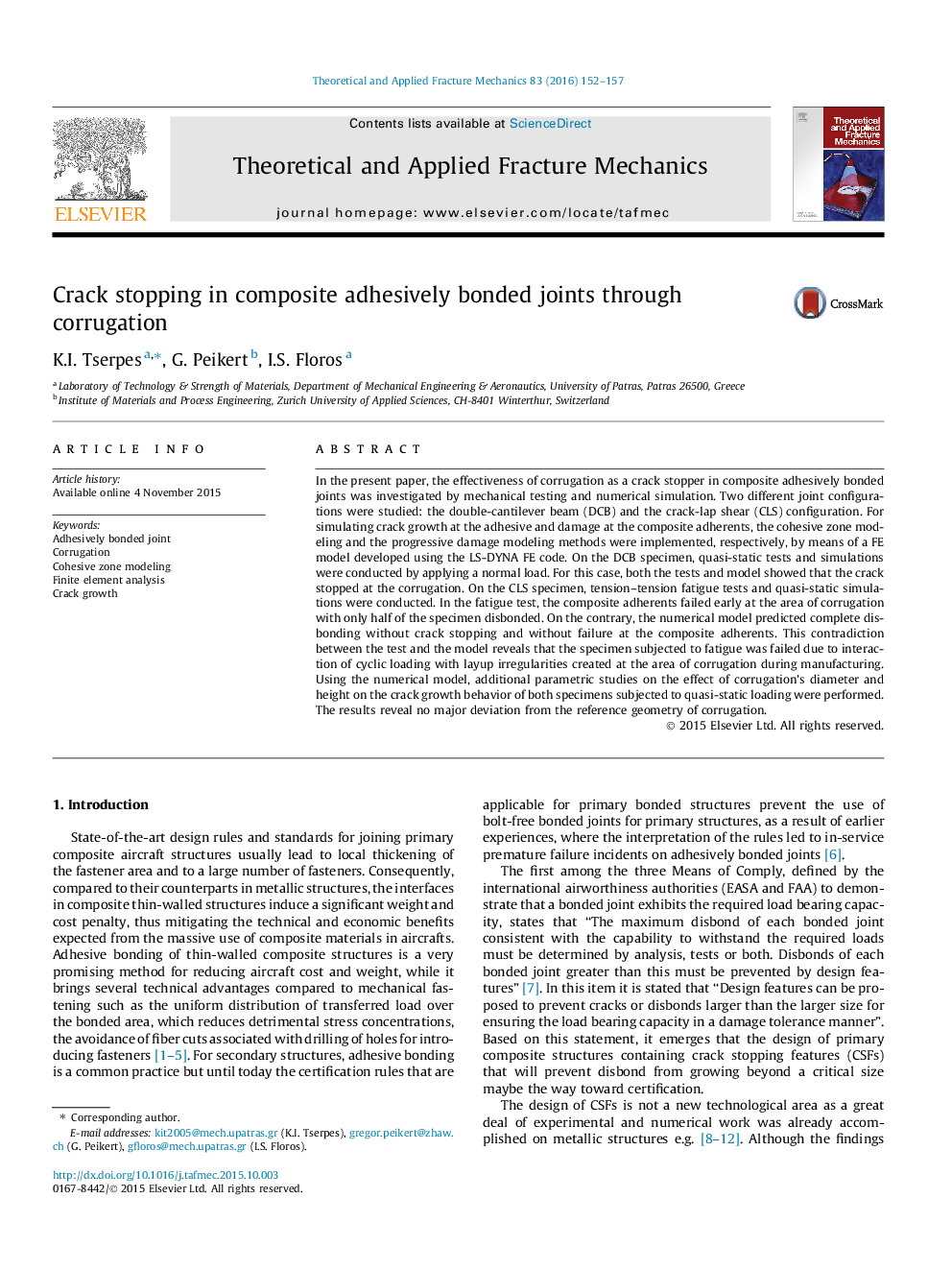| Article ID | Journal | Published Year | Pages | File Type |
|---|---|---|---|---|
| 804684 | Theoretical and Applied Fracture Mechanics | 2016 | 6 Pages |
•Discuss different approaches to certify composite bonded joints for aircraft structures.•Present the novel feature of corrugation for crack stopping.•Develop a robust numerical model for predicting crack growth and adherent failure in composite bonded joints.•Efficiently study the effectiveness of corrugation as a crack stopper.
In the present paper, the effectiveness of corrugation as a crack stopper in composite adhesively bonded joints was investigated by mechanical testing and numerical simulation. Two different joint configurations were studied: the double-cantilever beam (DCB) and the crack-lap shear (CLS) configuration. For simulating crack growth at the adhesive and damage at the composite adherents, the cohesive zone modeling and the progressive damage modeling methods were implemented, respectively, by means of a FE model developed using the LS-DYNA FE code. On the DCB specimen, quasi-static tests and simulations were conducted by applying a normal load. For this case, both the tests and model showed that the crack stopped at the corrugation. On the CLS specimen, tension–tension fatigue tests and quasi-static simulations were conducted. In the fatigue test, the composite adherents failed early at the area of corrugation with only half of the specimen disbonded. On the contrary, the numerical model predicted complete disbonding without crack stopping and without failure at the composite adherents. This contradiction between the test and the model reveals that the specimen subjected to fatigue was failed due to interaction of cyclic loading with layup irregularities created at the area of corrugation during manufacturing. Using the numerical model, additional parametric studies on the effect of corrugation’s diameter and height on the crack growth behavior of both specimens subjected to quasi-static loading were performed. The results reveal no major deviation from the reference geometry of corrugation.
